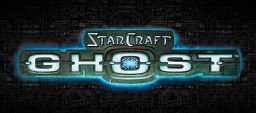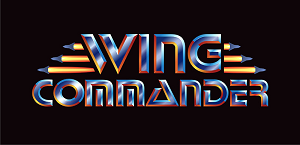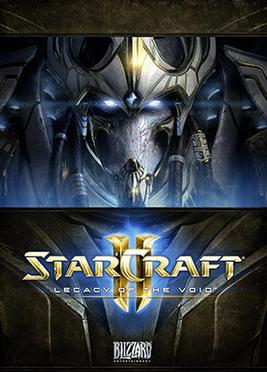
StarCraft is a real-time strategy video game developed and published by Blizzard Entertainment for Microsoft Windows. The first installment of the video game series of the same name, it was released in 1998. A Classic Mac OS version was released in 1999, and a Nintendo 64 port co-developed with Mass Media and published by Nintendo was released in 2000.

The Zerg are a fictional race of insectoid aliens obsessed with assimilating other races into their swarm in pursuit of genetic perfection, and the overriding antagonists for much of the StarCraft franchise. Unlike the fictional universe's other primary races, the Protoss and Terrans, the Zerg lack technological inclination. Instead, they "force-evolve" genetic traits by directed mutation in order to match such technology. Operating as a hive mind-linked "chain of command", the Zerg strive for "genetic perfection" by assimilating the unique genetic code of advanced species deemed "worthy" into their own gene pool, creating numerous variations of specialized strains of Zerg gifted with unique adaptations. Despite being notoriously cunning and ruthlessly efficient, the majority of Zerg species have low intelligence, becoming mindless beasts if not connected to a "hive-cluster" or a "command entity".

StarCraft: Ghost was a military science fiction stealth-action video game developed by Blizzard Entertainment. It was intended to be part of Blizzard's StarCraft series and was announced in September 20, 2002. It was to be developed by Nihilistic Software for the GameCube, Xbox, and PlayStation 2 video game consoles. After several delays, Nihilistic Software ceded development to Swingin' Ape Studios in 2004. In 2005, Blizzard announced plans for the GameCube version were canceled.

Wing Commander is a media franchise consisting of space combat simulation video games from Origin Systems, Inc., an animated television series, a feature film, a collectible card game, a series of novels, and action figures. The franchise originated in 1990 with the release of the video game Wing Commander.

StarCraft: Brood War is the expansion pack for the military science fiction real-time strategy video game StarCraft. Released in December 1998 for Microsoft Windows and June 1999 for Mac OS, it was co-developed by Saffire and Blizzard Entertainment. The expansion pack introduces new campaigns, map tilesets, music, extra units for each race, and upgrade advancements. The campaigns continue the story from where the original StarCraft ended, with the sequel, StarCraft II: Wings of Liberty, continuing from the conclusion of Brood War. The expansion was released first in the United States on December 18, 1998.

Sarah Louise Kerrigan, the self-styled Queen of Blades, is a character in Blizzard Entertainment's StarCraft franchise. She was created by Chris Metzen and James Phinney, and her original appearance was designed by Metzen. Sarah Kerrigan is voiced by Glynnis Talken Campbell in StarCraft and Brood War, Tricia Helfer in StarCraft II: Wings of Liberty, Heart of the Swarm and Legacy of the Void, and Vanessa Marshall in Heroes of the Storm.

WarCry is an out-of-print collectible card game set in the world of Warhammer Fantasy and published by Sabertooth Games. The base game cards were released in 2003, with newer expansions introduced in the months since. A video game adaptation, titled Warhammer: Battle for Atluma, was created for the PSP in 2006.

James Eugene Raynor is a major protagonist in Blizzard Entertainment's science fiction StarCraft series. Raynor is a predominant character in the science fiction real-time strategy video games StarCraft and Brood War and is a player character in StarCraft II: Wings of Liberty. He also appears as a playable character in the crossover multiplayer online battle arena game Heroes of the Storm. Outside video games, Raynor appears in the novels Liberty's Crusade and Queen of Blades, while his backstory is explored in the novels Heaven's Devils and Devil's Due. Robert Clotworthy voices the character in all video game appearances.

Twilight Imperium is a strategy board game produced by Fantasy Flight Games and Asmodee in the genre of science fiction and space opera. It was designed by Christian T. Petersen and was first released in 1997. It is now in its fourth edition (2017), which has large changes over previous editions. It is known for the length of its games and its in-depth strategy. As of 2024, its compelling gameplay and enduring popularity have been hailed by Nerdist and Polygon as one of the "greatest board games ever made."

The real time strategy (RTS) computer game StarCraft had an active professional competition circuit, particularly in South Korea. The two major game channels in South Korea, Ongamenet and MBCGame, each ran a Starleague, viewed by millions of fans.
Star Wars PocketModel Trading Card Game is an out-of-print tabletop game manufactured by WizKids, Inc. that debuted in 2007, based on the Star Wars universe. The game was designed by Mike Elliott and Ethan Pasternack.
Major and recurring characters from the military science fiction series StarCraft are listed below, organised by respective species and most commonly affiliated faction within the fictional universe. The story of the StarCraft series revolves around interstellar affairs in a distant sector of the galaxy, where three species are vying for supremacy: the Terrans, a highly factionalised future version of humanity; the Protoss, a theocratic race of vast psionic ability; and the Zerg, an insectoid species commanded by a hive mind persona. The latter two of these species were genetically engineered by the Xel'Naga, a fourth species believed extinct. The series was begun with Blizzard Entertainment's 1998 video game StarCraft, and has been expanded with sequels Insurrection, Retribution, Brood War, Ghost, Wings of Liberty, Heart of the Swarm, and Legacy of the Void. The franchise has been further extended with a series of novels, graphic novels, and other works.

Kim Taek-yong, known by his screen name Bisu[Shield] or simply Bisu, is a professional South Korean StarCraft player, playing the Protoss race. Famed primarily for sublime performance in the StarCraft: Brood War professional competitions against Protoss and, especially, Zerg, Bisu scored three successful Starleague performances, the most of any Protoss player. Bisu was nicknamed the Revolutionist for innovating the metagame of Protoss versus Zerg matchup.
StarCraft is a military science fiction media franchise created by Chris Metzen and James Phinney and owned by Blizzard Entertainment. The series, set in the beginning of the 26th century, centers on a galactic struggle for dominance among four species—the adaptable and mobile Terrans, the ever-evolving insectoid Zerg, the powerful and enigmatic Protoss, and the godlike Xel'Naga creator race—in a distant part of the Milky Way galaxy known as the Koprulu Sector. The series debuted with the video game StarCraft in 1998. It has grown to include a number of other games as well as eight novelizations, two Amazing Stories articles, a board game and other licensed merchandise, such as collectible statues and toys.

StarCraft: Insurrection is an expansion pack to the StarCraft video game with new campaign missions and multiplayer maps. It was licensed by Blizzard Entertainment to be developed by Canadian studio Aztech New Media and was released on June 10, 1998 for Windows.

StarCraft II: Wings of Liberty is a science fiction real-time strategy video game developed and published by Blizzard Entertainment. It was released worldwide in July 2010 for Microsoft Windows and Mac OS X. A sequel to the 1998 video game StarCraft and the Brood War expansion pack, the game is best known as the original installment of StarCraft II which was later followed by a number of expansion packs. Wings of Liberty has been free-to-play since November 2017.

StarCraft II: Heart of the Swarm is an expansion pack to the military science fiction real-time strategy game StarCraft II: Wings of Liberty, and the second part of the StarCraft II trilogy developed by Blizzard Entertainment, with the final part being Legacy of the Void. The game was released on March 12, 2013.

StarCraft II: Legacy of the Void is a standalone expansion pack to the military science fiction real-time strategy game StarCraft II: Wings of Liberty, and the third and final part of the StarCraft II trilogy developed by Blizzard Entertainment. The game was released on November 10, 2015.
StarCraft II is a real-time strategy video game created by Blizzard Entertainment, first released in 2010. A sequel to the successful StarCraft, released in 1998, it is set in a militaristic far future. The narrative centers on a galactic struggle for dominance among various races.

StarCraft II: Nova Covert Ops is a downloadable content (DLC) single-player mission pack for the military science fiction real-time strategy game series StarCraft II. Consisting of nine missions, it was released over the course of three installments as DLC, with three missions in each separably purchasable pack. The first mission pack was released March 29, 2016, the second mission pack released on August 2, 2016 and the final mission pack was released on November 22, 2016.















